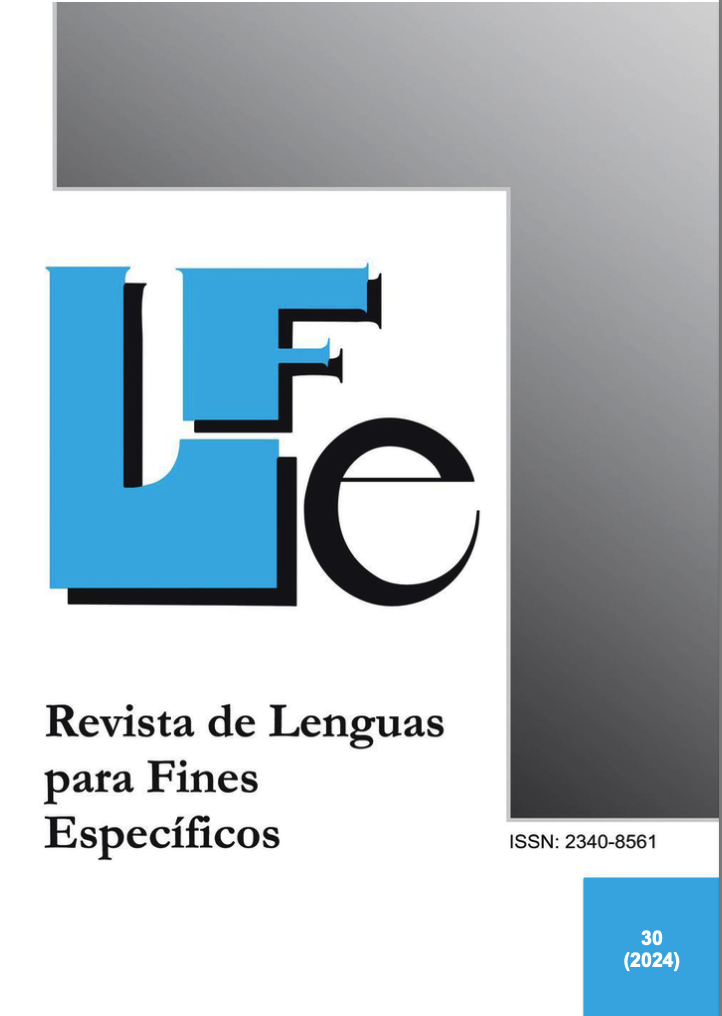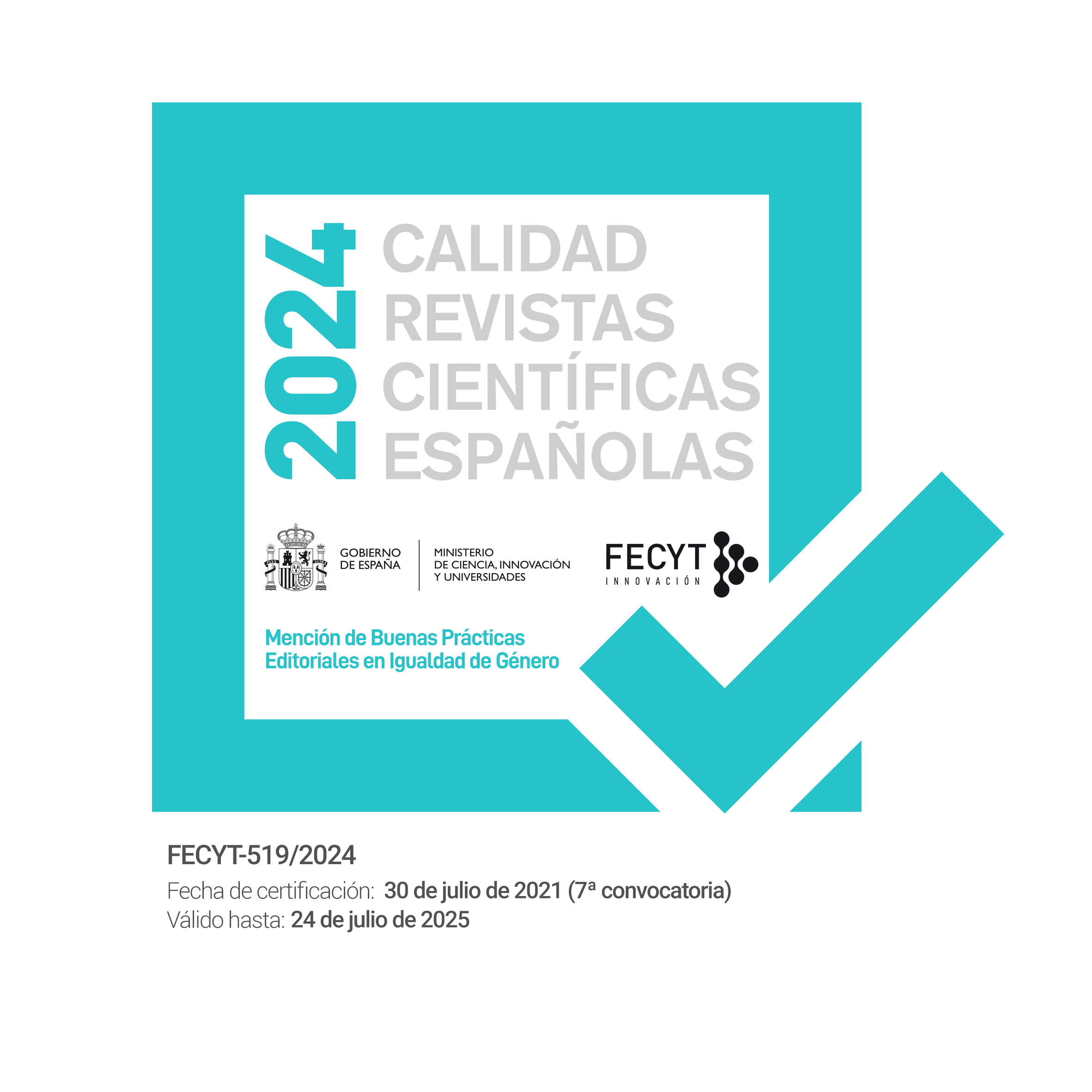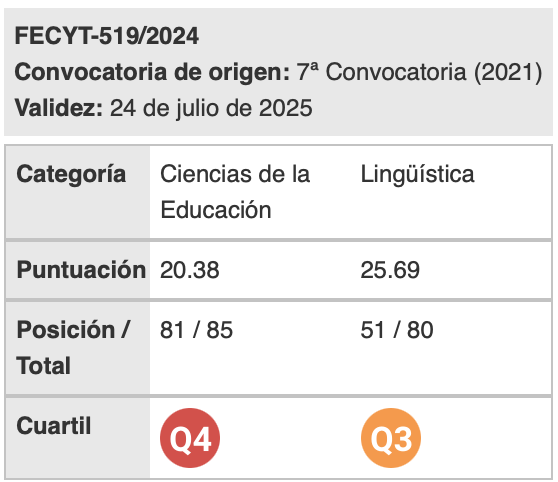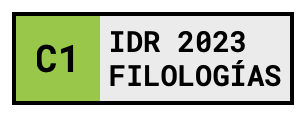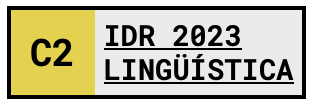Analysis of errors in the use of grammatical gender by Persian students of Spanish as a foreign language
DOI:
https://doi.org/10.20420/rlfe/2024.706Keywords:
Gender in Spanish, gender agreement, error analysis, Persian language, Spanish SFLAbstract
Spanish is a language with unique characteristics, such as the use of the grammatical gender morpheme and the article as a determiner, which makes it difficult for speakers of languages such as Persian, whose native language lacks these elements, to learn. The difficulty is further compounded when it comes to the agreement of gender and number in nominal groups in Spanish. In this study, we seek to analyze a corpus of Persian students of Spanish using the Error Analysis methodology with the purpose of identifying frequent errors regarding grammatical gender in Spanish, analyzing the underlying causes, and suggesting possible solutions to improve understanding, and the use of grammatical gender in Spanish among Persian students.Downloads
References
Ábrahám, S. (2008). Dificultades de los estudiantes húngaros en el aprendizaje del español. Acta Hispanica, 13, 135–146.
Alarcón, I. (2004). The sequential acquisition of L2 Spanish gender marking: Assignment and agreement. IULC Working Papers, 4(1).
Alarcón, I. (2020). Early and late bilingual processing of Spanish gender, morphology and gender congruency. Borealis – an International Journal of Hispanic Linguistics, 9(2), 175–208. <https://doi.org/10.7557/1.9.2.5523> [17/7/2023].
Alarcón, I. V. (2011). Spanish gender agreement under complete and incomplete acquisition: Early and late bilinguals’ linguistic behavior within the noun phrase. Bilingualism: Language and Cognition, 14(3), 332–350. <https://doi.org/10.1017/S1366728910000222> [22/7/2023].
Alhawary, M. T. (2005). L2 Acquisition of Arabic Morphosyntactic Features. In Perspectives on Arabic Linguistics (Vol. 17, pp. 273–312). John Benjamins Publishing Company.
Alhawary, M. T. (2009). Speech Processing Prerequisites or L1 Transfer? Evidence From English and French L2 Learners of Arabic. Foreign Language Annals, 42(2), 367–390. <https://doi.org/10.1111/j.1944-9720.2009.01025.x> [26/7/2023].
Álvarez, M. J. T. (2007). Evolución e historia de la lengua española (Vol. 2). Arco Libros.
Barrera, F. S. (2023). Análisis de errores en la concordancia nominal del español. Un estudio sobre un grupo de estudiantes noruegos de ELE [Master’s Thesis, UiT Norges arktiske universitet]. <https://hdl.handle.net/10037/30437> [12/7/2023].
Bates, E., & MacWhinney, B. (1987). Competition, variation, and language learning. Mechanisms of Language Acquisition, 157–193.
Cabrera, A. F., & Gómez, J. E. (2017). Análisis de errores recurrentes en el Corpus de Aprendices de Español como Lengua Extranjera, CAELE. Revista Brasileira de Linguística Aplicada, 17(3), 509–538. <https://doi.org/10.1590/1984-6398201710927> [11/7/2023].
Corder, S. P. (1967). The significance of learner’s errors. IRAL - International Review of Applied Linguistics in Language Teaching, 5(4), 161–170.
De Garavito, J. B., & White, L. (2002). The second language acquisition of Spanish DPs: The status of grammatical features. In The acquisition of Spanish morphosyntax (Vol. 3, pp. 153–178). Springer.
Echaide, A. M. (1969). El género del sustantivo en español: Evolución y estructura. Iberoromania, 1, 89–124.
Ellis, C., Conradie, S., & Huddlestone, K. (2012). The acquisition of grammatical gender in L2 German by learners with Afrikaans, English or Italian as their L1. Stellenbosch Papers in Linguistics, 41, 17–27. <https://doi.org/10.5774/41-0-131> [11/7/2023].
Ellis, R. (1989). Understanding second language acquisition (Vol. 31). Oxford: Oxford University Press.
Foley, C., & Flynn, S. (2013). The role of the native language. In The Cambridge Handbook of Second Language Acquisition (pp. 97–113). <https://doi.org/10.1017/cbo9781139051729.008> [11/7/2023].
Foucart, A., & Frenck-Mestre, C. (2011). Grammatical gender processing in L2: Electrophysiological evidence of the effect of L1–L2 syntactic similarity - ERRATUM. Bilingualism: Language and Cognition, 14(3), 379–399. <https://doi.org/10.1017/s1366728911000137> [1/8/2023].
Franceschina, F. (2001). Morphological or syntactic deficits in near-native speakers? An assessment of some current proposals. Second Language Research, 17(3), 213–247.
Golfām, A. (2015). Fundamentals of Grammatical Analysis (9a ed.). SAMT.
Gómez Torrego, L. (2013). Manual del Español Correcto II: Morfología y sintaxis (8a ed.). Arco, Libros, S.A.
Grüter, T., Lew-Williams, C., & Fernald, A. (2012). Grammatical gender in L2: A production or a real-time processing problem? Second Language Research, 28(2), 191–215.
Guivi, H. A., & Anvari, A. (2021). Gramática de la lengua persa 2 (13a ed.). Instituto cultural Fātemi.
Instituto Cervantes. (2022). Marco Común Europeo de Referencia para las Lenguas: aprendizaje, enseñanza, evaluación. Instituto Cervantes.<https://cvc.cervantes.es/ensenanza/biblioteca_ele/marco/cvc_mer.pdf> [5/7/2023].
James, C. (2013). Errors in Language Learning and Use. Routledge.
Keating, G. D. (2009). Sensitivity to Violations of Gender Agreement in Native and Nonnative Spanish: An Eye-Movement Investigation. Language Learning, 59(3), 503–535. <https://doi.org/10.1111/j.1467-9922.2009.00516.x> [18/7/2023].
Kobashi, S. (2016). Enseñanza y aprendizaje del artículo en español por parte de estudiantes japoneses. Tesis doctoral, UCM.
Lado, R. (1957). Linguistics across cultures; applied linguistics for language teachers. Ann Arbor, The University of Michigan Press.
Li, C. (2019). Estudio contrastivo entre el género gramatical en español y el género semántico y pragmático en chino mandarín y su aplicación didáctica en ELE para alumnos sinohablantes. Tesis doctoral, UCM.
Lozano Zahonero, M. (2010). Gramatica de referencia de la lengua espanola. Ulrico Hoepli Editore.
Madrid, D. (1999). Errores gramaticales en la producción escrita de los angloamericanos. Educación Lingüística Y Literaria En El Ámbito Escolar, 609–623.
Martín, E. F. (2010). Contexto ELE: Análisis de las dificultades lingüísticas y necesidades de los estudiantes universitarios alemanes. EL ESPAÑOL EN CONTEXTO, 129.
Martín, M. A. R. (2005). “¡Houston, tenemos *una problema!” Problemas con la concordancia de género en la clase de E/LE. En Las gramáticas y los diccionarios en la enseñanza del español como segunda lengua, deseo y realidad: Actas del XV Congreso Internacional de ASELE, (pp. 777–784). Universidad de Sevilla.
Martoccio, A. (2019). Gender assignment strategies used by L1 and L2 speakers of Spanish. International Review of Applied Linguistics in Language Teaching, <https://doi.org/10.1515/iral-2018-0201> [12/6/2023].
Møller, M. T. (2022). La concordancia en los adjetivos en español: marcado morfológico, significado y transferencia desde el noruego. Un análisis de errors. Master’s thesis, UiT Norges arktiske universitet.
Montrul, S., Foote, R., & Perpiñán, S. (2008). Gender Agreement in Adult Second Language Learners and Spanish Heritage Speakers: The Effects of Age and Context of Acquisition. Language Learning, 58(3), 503–553. <https://doi.org/10.1111/j.1467-9922.2008.00449.x> [27/7/2023].
Montrul, S., Slabakova, R., Montrul, S. A., & Prévost, P. (2006). Incomplete acquisition as a feature of bilingual and L2 grammars. Inquiries in Linguistic Development, 335–359.
Moreno, M. C. (2014). Dificultades lingüísticas del español para los estudiantes sinohablantes y búsqueda de soluciones motivadoras. Monográficos SinoELE: La enseñanza del español para sinohablantes en contextos, 10, 173.
Ogneva, A. (2022). El género gramatical en español como L2: un estudio de producción con aprendices rusohablantes. En Desarrollos teóricos y aplicaciones en la lingüística actual (pp. 167–178). Universitat de València.
Parvizi, P. (2014). El artículo determinado en español en los estudiantes persas. Círculo de Lingüística Aplicada a La Comunicación, 59. <https://doi.org/10.5209/rev_clac.2014.v59.46710> [15/09/2023].
Parvizi, P. (2021). Linguistic sexism in Spanish language electronic newspaper. Journal of Foreign Language Research, 10(4), 672–685. <https://doi.org/10.22059/jflr.2021.315040.785> [15/09/2023].
Parvizi, P. (2022a). Propuestas didácticas para la enseñanza del artículo determinado a los alumnos persas de español como lengua extranjera. Revista Lengua Y Habla, 26. <http://erevistas.saber.ula.ve/index.php/lenguayhabla/article/view/18485/21921929858> [15/09/2023].
Parvizi, P. (2022b). Gramática de la Lengua Española, Clases de Palabras. University of Tehran Press (UTP).
Penny, R. (1998). Gramática histórica del español. Ariel.
Prévost, P., & White, L. (2000). Missing surface inflection or impairment in second language acquisition? Evidence from tense and agreement. Second Language Research, 16(2), 103–133.
Rammou, E. (2020). Análisis de errores gramaticales en la expresión escrita de aprendices griegos de español como lengua extranjera. Tesis doctoral, UNED.
Real Academia Española. (2009). Manual de la Nueva Gramática de la lengua española. Grupo Planeta Spain.
Real Academia Española. (2009). Nueva Gramática de la Lengua Española. Morfología y Sintaxis I. Madrid, Espasa.
Ruppl, Z. (2015). Español y húngaro, dos mundos diferentes. In Y. Morimoto, M. V. Pavón Lucero, & R. Santamaría Martínez (Eds.), La enseñanza de ELE centrada en el alumno (pp. 841–853). Getafe, ASELE.
Sabourin, L., Stowe, L. A., & De Haan, G. J. (2006). Transfer effects in learning a second language grammatical gender system. Second Language Research, 22(1), 1–29. <https://doi.org/10.1191/0267658306sr259oa> [15/8/2023].
Saito, A. (2005). Análisis de errores en la expresión escrita de estudiantes japoneses. Biblioteca Virtual RedELE.
Santos Gargallo, I. (1993). Análisis contrastivo, Análisis de errores e interlengua en el marco de la Lingüística contrastiva. Madrid, Síntesis.
Santos Gargallo, I. (2004). El análisis de errores en la interlengua del hablante no nativo. Vademécum Para La Formación de Profesores, 391–410.
Seibane, S. (2010). Dificultades morfosintácticas de lusohablantes en el aprendizaje de español: explicaciones desde la historia de la lengua. Letra Viva, 10, 85–108.
Selinker, L. (1972). Interlanguage. IRAL-International Review of Applied Linguistics, 10(1-4), 209–232.
Selinker, L. (2014). Interlanguage 40 Years on: Three Themes from Here. In Z. Han & E. Tarone (Eds.), Interlanguage: Forty Years Later (pp. 221–246). John Benjamins Publishing Company.
Selinker, L., & Rutherford, W. E. (2013). Rediscovering interlanguage. In Routledge. Routledge.
Tirado, R. G. (2018). Sobre las particularidades de la enseñanza del español a estudiantes rusohablantes. Revista de Humanidades, 35, 217–241. <https://doi.org/10.5944/rdh.35.2018.19986> [3/7/2023].
White, L., Valenzuela, E., Kozlowska–Macgregor, M., & Leung, Y. K. I. (2004). Gender and number agreement in nonnative Spanish. Applied Psycholinguistics, 25(1), 105–133.
Xiaoxu, L., Lima, S. D. H., & Rocha, C. L. S. (2022). La lengua china y la enseñanza de ele desde el enfoque léxico a sinohablantes. Órbita Científica, 118(28). <http://revistas.ucpejv.edu.cu/index.php/rOrb/article/view/14591> [10/7/2023].
Yang, J. (2015). El género gramatical en una gramática del español como segunda lengua. Tesis doctoral, UCM.
Downloads
Published
How to Cite
Issue
Section
License
Copyright (c) 2024 Pardis Parvizi

This work is licensed under a Creative Commons Attribution-NonCommercial-NoDerivatives 4.0 International License.
Authors who publish with this journal agree to the following terms:
- Authors retain copyright and grant the journal right of first publication with the work simultaneously licensed under a Creative Commons Attribution License that allows others to share the work with an acknowledgement of the work's authorship and initial publication in this journal.
- Authors are able to enter into separate, additional contractual arrangements for the non-exclusive distribution of the journal's published version of the work (e.g., post it to an institutional repository or publish it in a book), with an acknowledgement of its initial publication in this journal.
- Authors are permitted and encouraged to post their work online (e.g., in institutional repositories or on their website) prior to and during the submission process, as it can lead to productive exchanges, as well as earlier and greater citation of published work (See The Effect of Open Access).

Revista de Lenguas para fines específicos is licensed under a Creative Commons Reconocimiento-NoComercial-SinObraDerivada 4.0 Internacional License.

